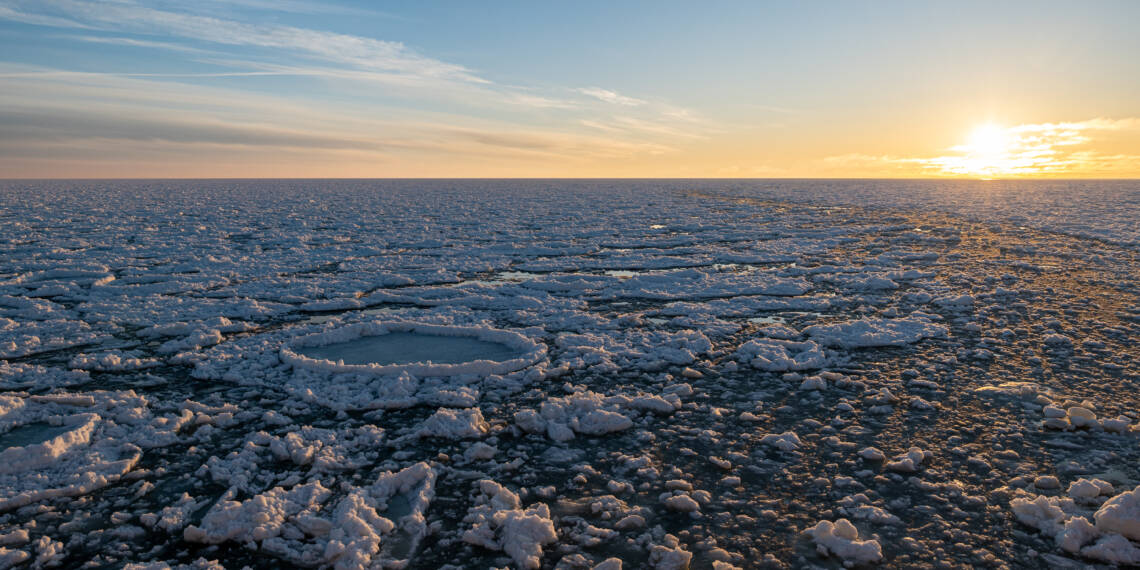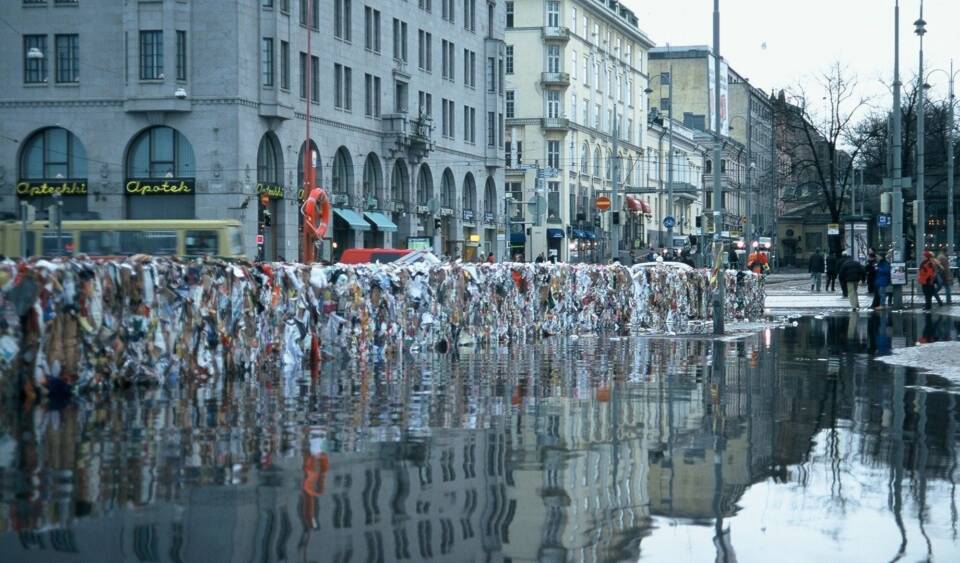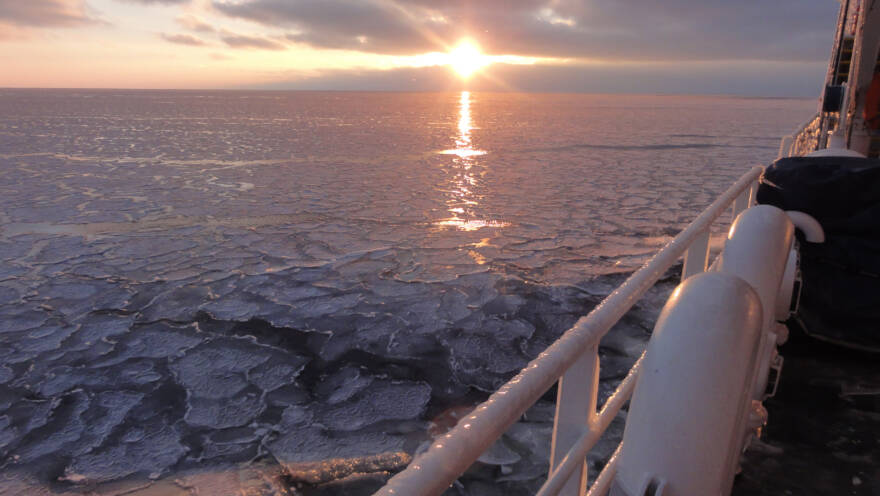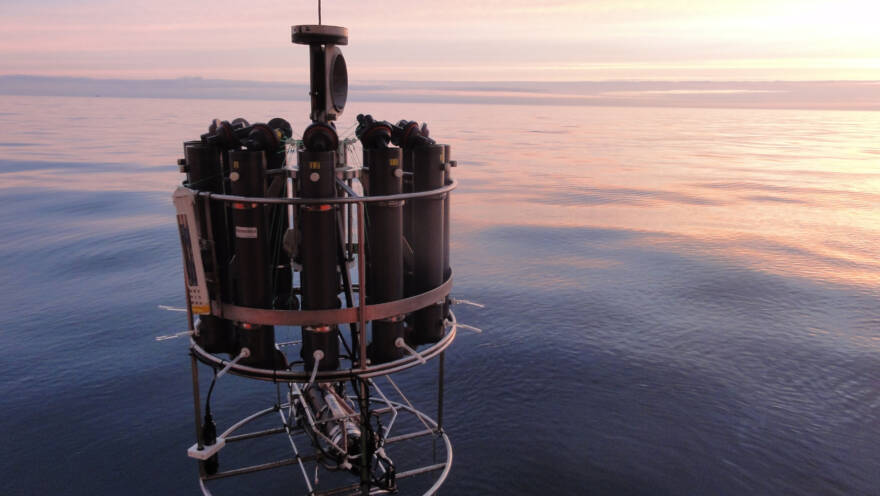
Climate change will inevitably affect the Baltic Sea
Climate change causes Nordic winters to become both warmer and wetter. It is predicted that the Baltic Sea will become a rather warm sea and also less saline than before. There is no such sea anywhere in the world today and perhaps there never has been. The inhabitants and nature of the Baltic Sea region are facing a new situation.
The full effects of climate change on the Baltic Sea and its marine environment are not yet known. The sea will likely become more eutrophicated. We can still influence this development.
Seawater temperatures increase and salt content decreases
Precipitation has varied in the Baltic Sea region, both seasonally and regionally. However, the general trend is that precipitation seems to have increased during the winter and spring in the second half of the 20th century, probably due to climate change.
As rainfall increases, so does the amount of water carried by rivers to the sea. Rivers bring freshwater to the sea, so changes in flow rates affect the salinity of the sea. Annual river flows have increased in Finland as well as in other Nordic countries. In contrast, annual flow rates have decreased in the southern and eastern coastal states of the Baltic Sea.
As rainfall increases, the Baltic Sea becomes less saline. In the Northern Baltic Sea, the salinity of surface water is currently between 5 and 7 PSU (Practical Salinity Units, equivalent to parts per thousand or ppt) and is expected to further decrease by one or two PSU. The salinities in the Gulfs of Finland and Bothnia are also decreasing below their former levels.
As the water warms, the ice cover shrinks
The salinity and temperature of the Baltic Sea have been monitored for decades. Measurements show that in open sea areas, the water temperature has increased by an average of more than two degrees between 1980 and 2023.
The effects of climate change are most evident in the northern Baltic Sea. The surface temperature of the Northern Baltic Sea is estimated to rise by 2 to 4°C by 2100. At the same time, the ice cover period will be shortened by one to two months and the largest ice cover area in winter will be reduced by 50%, compared to today.
If there is less sea ice, strong winds could cause seawater to mix deeper in the water column. This could prevent winter oxygen depletion. On the other hand, many chemical and biological processes accelerate as the sea warms, which amplifies both oxygen consumption, as well as the effects of environmental toxins. Oxygen depletion and other marine problems could therefore worsen.

The water level is rising and floods are increasing
The melting of continental glaciers and the thermal expansion of seawater are raising the water level in the Baltic Sea as well. This intensifies flooding.
Climate change is already visible in the water level of the Baltic Sea. The rise in the ocean’s water level is offset by land uplift on the Finnish coast, while in the Gulf of Bothnia, this uplift will reverse the rise in sea level for several more decades yet. In the Gulf of Finland, medium water levels are starting to rise instead. This must be considered in community planning.

Eutrophication is the most serious consequence of climate change
Increasing winter rains flush even more nutrients from the land into the sea. This enhances phytoplankton growth. Increasing plankton production produces more organic matter in the sea, accelerating decomposition and depleting the seabed’s oxygen reserves more quickly.
If oxygen becomes depleted, the phosphorus bound to the sediments is released back into the water column. This will cause marine eutrophication to intensify even further and the risk of cyanobacterial rafts will increase in the Baltic Proper, the Gulf of Finland, and the Archipelago Sea. In the Bay of Bothnia, the situation is slightly different: here, strong bacterial production consumes nutrients and inhibits the growth of planktonic algae.
Marine living conditions and the food web are changing
The change in living conditions in the Baltic Sea is reflected in its marine life. Species which favour warmer conditions are becoming more abundant and spreading northwards, while cool water species are declining. As seawater becomes less saline, freshwater species increase and marine species decline. Changes in ice cover, in turn, affect the spring and summer nutrient status of the sea and thereby phytoplankton and its species composition also.
These causal relationships are highly complex. Species not only react directly to changes in the environment but also to other species and the changes they cause. More alien species from other seas and inland waters may also enter the Baltic Sea. The entire food web may change unpredictably.
Some species are disappearing, others are strengthening their position
The decrease or even disappearance of sea ice cover affects ice-dependent species, such as the Baltic ringed seal. The decrease in salinity, in turn, may completely eradicate some species from the Finnish coast, such as seagrass. The distribution of bladder wrack kelp and blue mussels is also likely to decline.
Seagrass, bladder wrack, and blue mussels are so-called key species, i.e. they provide habitat or food for many other species living in the Baltic Sea. The change may thus be widely reflected in marine life and the functioning of the marine ecosystem.
On the other hand, species which favour freshwater can increase their occurrence and take greater responsibility for marine functioning. For example, some aquatic plants, such as perfoliate pondweed, i.e. Potamogeton perfoliatus, are likely to spread more widely.

In addition, cyprinid fish, such as roach and bream will also be able to reproduce and raise their young in a much wider area than before. Many of them currently spawn only in freshwater bays in the innermost reaches of the Baltic Sea. Thus, in the future, our archipelagos may become dominated by such fish species.
The increasing absorption of carbon dioxide by the sea can lead to ocean acidification. This, together with changes in temperature conditions and overfishing, can endanger fish production in the Baltic Sea. In addition to fish stocks, these changes affect the entire marine ecosystem.
It is worth preparing for climate change early
Slowing and mitigating climate change is a necessary task for all of humanity. It is also important to act locally and prepare for change. Above all, nutrient loads entering the Baltic Sea must be reduced and eutrophication decreased. This is vital because climate change will inevitably increase nutrient runoff levels.
Although climate change appears to be progressing slowly by human standards, from a natural point of view, this change is extremely rapid. It is expected that the effects of climate change on the state of the Baltic Sea will occur within decades or perhaps a century. However, to benefit the Baltic Sea, action can and must be taken now.
-
 Find out more
Find out moreSea ice
-
 Find out more
Find out moreSalinity and temperature

